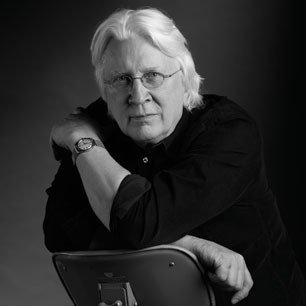Tinseltown, Vancouver, B.C.
Vancouver’s International Village, known as “Tinseltown” is most accurately understood as an illustration of the city’s dysfunctional present. When it opened in 1999, it featured a ground floor with specialty food services and some midrange retail, a second floor of high end retail, and a third floor motion picture multiplex, state of the art. The owners promised an onslaught of Versace and Prada, but the Asian economic crisis killed most of that, and retail has been a scramble there since. Architecturally a square from the outside, the inside of the building is circular around a central staircase and courtyard that mainly wastes vast amounts of space.
The dominating architectural details are polished aluminum and steel, glass and blond-wood tabletops and store facades, The food court is almost exclusively Asian, which is what “international” means in Vancouver. The site was first planned by Li Ka Shing’s Concord Pacific, then sold to their friends and Hong Kong cronies Henderson Developments, who are so sickeningly wealthy they can sit on this non-performing investment for a decade and wait for the city to transform itself around it, which may now be happening, with six new towers planned. But rich also means insensitive, and the developers made some predictable design mistakes. The mall’s air conditioning/heating system was so vastly overbuilt that the usual environmental hum is a barely-modulated building roar, like white noise on steroids.
Yet it’s the sociometrics built into Tinseltown that make it interesting. It lies atop the unofficial western boundary between downtown Vancouver and the city’s Downtown East Side, which is the country’s poorest postal code and most drug-infused neighbourhood. The likely assumption made by the developers was that the high-end retail would push the boundary of downtown eastward and create a focus point for high end Asian shopping, one that would eventually set off a gentrification of the area and—you can almost see them hoping—eradicate the downtown east side altogether. Their hopes may be coming true.
When Tinseltown opened, it featured security guards at all the entrances, charged to keep the rabble out. That didn’t work because for all its poverty, Downtown East Siders are politically organized, and the rabble, no matter what their appearance may suggest, know they have rights and know how to exercise them.
The theatre complex is owned by Landmark Cinemas, from Dallas, in their second Canadian venture (the first is in Alberta). It has its own radio network that plays promotional tapes and tie-in rockers while you pee. It’s rumoured that Landmark pays no rent—they’re there to draw shoppers. On the other hand, the theatres are the only place in Vancouver where you can watch Canadian-made movies, courtesy the complex’s surplus—and rent-free—theatres.
When I did a walk-through of Tinseltown shortly after it opened, the security guards seemed more than a little confused about what to do with the rabble. I sat in the food court and watched a succession of seedy looking drifters amble through, their expressions part pleasure at being out of the rain, part uncertainty at knowing they were intruding among the hostile rich. They didn’t make it to the second and third floors, where the sense of space and the absence of food outlets was alienating enough to provide its own defense, but they more or less owned the ground floor. The wealthy Asian shoppers weren’t exactly thronging to the boutiques, either. The shops were overwhelmingly, almost pointedly empty of customers, with sullen Asian clerks standing around, and nearly everything was on sale—a white sheepskin vest in one shop, I noted, was marked down 50% to $450, which is 20% above what it would sell for in Toronto.
By the time of my second visit, several years later, most of the food outlets on the main floor were closed or had slipped downmarket, and the building belonged to the Downtown East Siders–the rabble were in full control. The tubular metal and wood chairs in the food court were more sparse in number and were badly scarred, and some of the tubulars appeared to have been filled with concrete to prevent the locals from stealing them. The second and third floors were virtually empty—the wealthy Asians, who live in West Point Grey or Kerrisdale, weren’t prepared to run the gauntlet to get to the shops. Only the theatre complex was operating above the ground floor, and I was told the theatres were usually less than full.
Money doesn’t always win, I guess. The social cynicism at the core of Tinseltown made me glad it hasn’t won here—at least, not so far.
766 w. August 31, 2004



